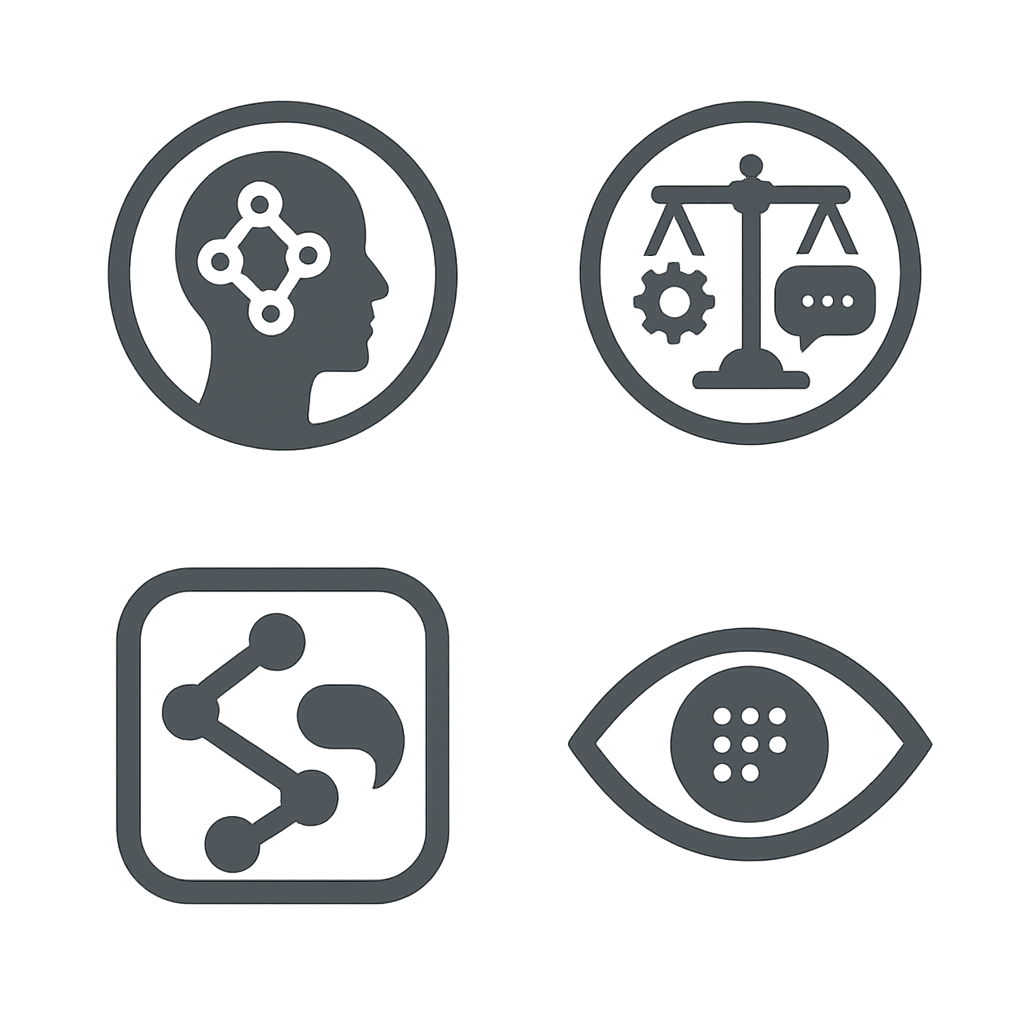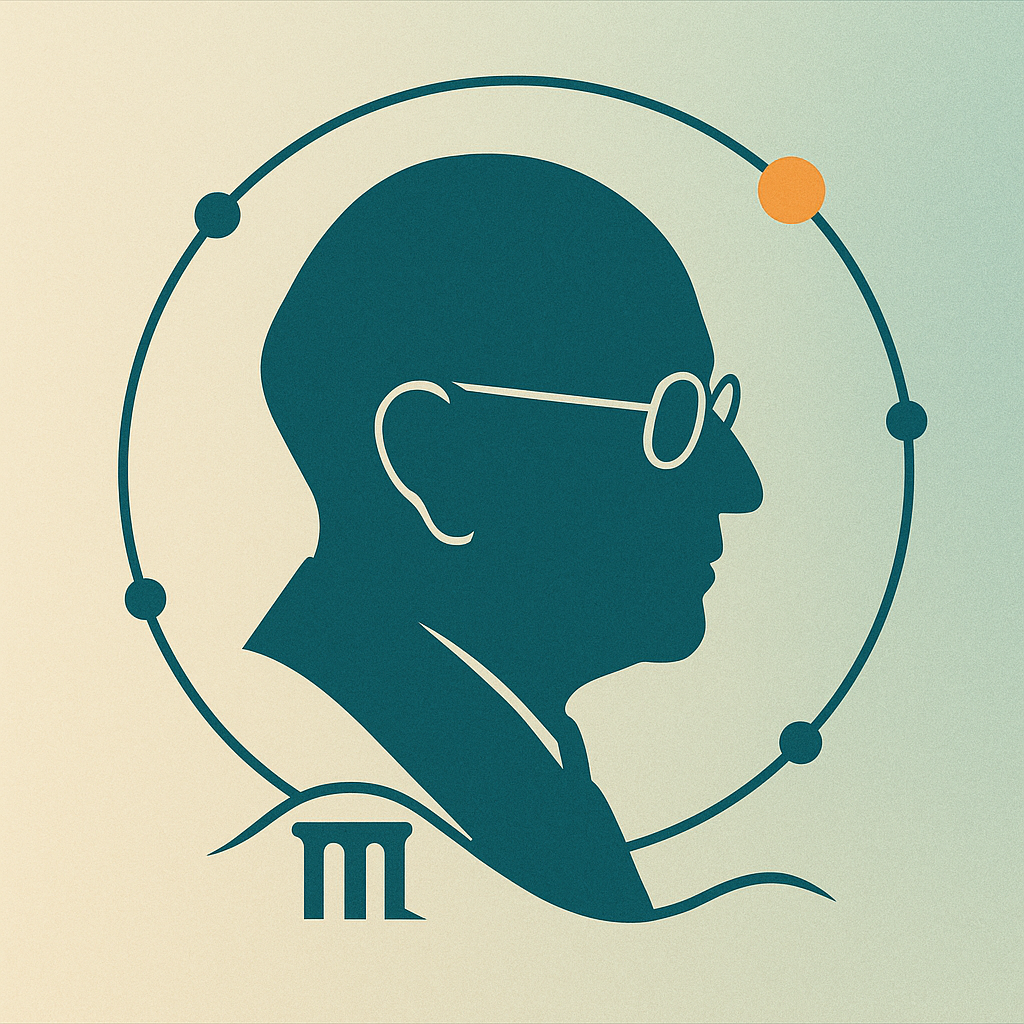AI is not a gadget but a long-term social process. If I ask with Elias how interdependent people weave themselves into figurations, how power balances shift, and how “we–I” relations change, AI looks less like a sudden disruption and more like a re-patterning of manners, knowledge, and institutions over generations (Elias 1939/1969).
Why Elias—why now?
Elias helps me avoid two traps in today’s AI talk: presentism and individualism. Presentism shrinks our horizon to product cycles; individualism reduces society to “users” and “innovators.” Elias urges me to study long chains of interdependence, shifting power ratios, and the slow civilizing/decivilizing drifts that technologies amplify (Elias 2010; 1987/2007).
Five Eliasian lenses for AI
1) Figurations, not isolated actors. AI lives in webs: model builders, platform owners, regulators, crowd-workers, dataset contributors, and affected publics. Mapping who depends on whom—where feedback, funding, standards, and reputations circulate—makes power visible beyond heroic founders or villainous systems (see the figurational program summarized by the Elias Foundation). (Elias n.d.).
2) Long processes of (de-)civilising. Platforms codify manners: acceptable prompts, safety rails, disclosure rituals. Over time, these rules can reduce open aggression—or, conversely, normalize “polite” exclusion through opaque scoring and content filters. Elias would ask how constraint moves from external moderation to internal self-restraint of developers, managers, and users (Elias 1939/1969).
3) Established–Outsider dynamics. In AI ecosystems, “established” actors (incumbent labs, compute holders, cloud platforms) can monopolise key resources and stigmatise outsiders (“unsafe,” “unreliable,” “unprofessional”). Gossip circuits—benchmarks, leak narratives, leaderboard chatter—stabilise reputations. Elias and Scotson’s lens helps me see how coalitions defend status, and how outsiders regroup to alter the power balance (Elias & Scotson 1965/2008).
4) The shifting We–I balance. AI tools re-distribute agency between collectives (“we build, we deploy, we govern”) and individuals (“I prompt, I decide”). Developers become dependent on organizational “we’s” (toolchains, policy, infra), while end-users internalise platform etiquette. Elias helps me track how identities are reworked across these ties (Elias 2010).
5) Involvement & Detachment. Public debate on AI is hotly involved; good inquiry needs calibrated detachment without moral indifference. Elias’s advice is practical: cool the temperature enough to see longer chains of cause and consequence—then return findings to the public without retreating into false neutrality (Elias 1987/2007).
Three quick applications
Content moderation as court society. Behind “community standards” sit etiquette codes enforced by dashboards, queues, and KPIs. Like an early-modern court, access and favour (priority, appeals channels, policy exemptions) distribute unevenly across actors. The figurational question is not “who violates rules?” but “who writes, revises, and exempts them over time—and why?” (Elias 1939/1969).
Data monopolies and outsider stigma. Open-source communities often face “outsider” narratives (“reckless,” “under-resourced”) while incumbents defend data/compute monopolies with claims to responsibility and maturity. Watching gossip, leaks, and benchmark rituals through Elias’s lens reveals how status is made and unmade (Elias & Scotson 1965/2008).
Research temperature management. Safety debates swing between alarm and dismissal. Elias’s involvement–detachment invites structured cooling phases—transparent methods, delayed judgments, replication—followed by re-involvement when evidence allows action (Elias 1987/2007).
How I would study this (toolkit for students)
- Figuration maps: chart interdependencies among labs, vendors, standards bodies, funders, and publics; mark resource flows and choke points.
- Power balances over time: trace how access to data/compute/expertise centralises or diffuses across cycles.
- We–I balance diaries: follow how professional identities and user self-images shift with model updates and policy changes.
- Temperature logs: alternate involved fieldnotes (forums, PR, crisis moments) with detached analyses (audits, timelines, archival docs).
Guiding questions
- Where do etiquette codes in AI come from, and who gains status as they harden?
- Which outsider groups are consolidating, and how are they re-balancing power?
- When does public debate need cooling—and who can credibly cool it?
Literature (APA)
Elias, N. (1969). Über den Prozeß der Zivilisation (2. Aufl.). Suhrkamp. Über den Prozeß der Zivilisation.
Elias, N. (2007). Involvement and Detachment (Collected Works, Vol. 8). UCD Press. Involvement and Detachment.
Elias, N., & Scotson, J. L. (2008). The Established and the Outsiders (Collected Works, Vol. 4). UCD Press. The Established and the Outsiders.
Elias, N. (2010). The Society of Individuals (Collected Works, Vol. 10). UCD Press. The Society of Individuals.


Schreibe einen Kommentar